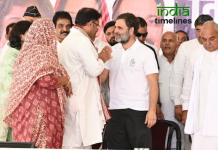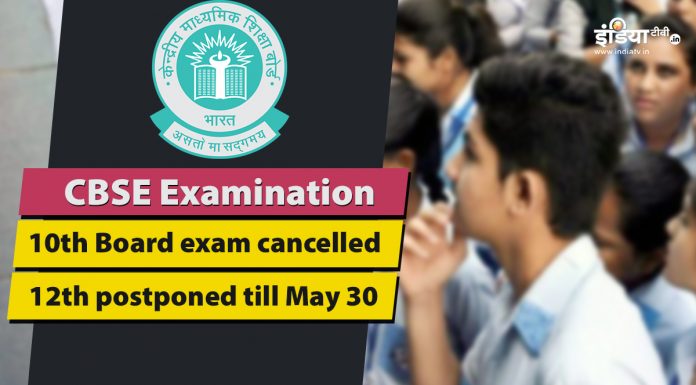
The Indian government’s recent clearance of the ‘One Nation, One Election’ proposal has sparked widespread discussions, marking a significant shift in the country’s democratic framework. As the government works towards building consensus across political parties, this potential constitutional reform could alter the very fabric of India’s electoral system. But what does this initiative entail, and how will it reshape India’s governance? Let’s dive into the details of the ‘One Nation, One Election’ proposal and its implications.
What is the ‘One Nation, One Election’ Proposal
The ‘One Nation, One Election’ concept is designed to synchronize state assembly elections and general elections across India. Traditionally, elections in India are conducted separately at the national and state levels. With elections happening periodically across different states, the electoral process often results in a near-constant election cycle, causing interruptions in governance and policy implementation. The goal of this proposal is to streamline elections, ensuring that they are held simultaneously, reducing the disruption caused by frequent polls.
The rationale behind ‘One Nation, One Election’ is to bring uniformity and efficiency to India’s electoral process, potentially saving significant resources in terms of both time and money. It also promises to reduce voter fatigue by consolidating elections into one event, thereby increasing participation and reducing the burden on the Election Commission of India.
Why Does the Government Want to Implement This Proposal?
There are several factors driving the government’s push for the ‘One Nation, One Election’ proposal:
1. Cost Efficiency
Conducting separate elections for the Lok Sabha and state assemblies incurs massive expenditures. From deploying security forces to setting up polling booths, the financial burden on the exchequer is considerable. Synchronizing elections could significantly cut down on these costs, freeing up funds for developmental activities.
2. Reduced Disruption to Governance
Frequent elections lead to the imposition of the Model Code of Conduct (MCC), which limits government actions, stalling policy-making and governance. With simultaneous elections, the MCC would come into effect less frequently, allowing uninterrupted governance for longer periods.
3. Enhanced Voter Turnout
The constant election cycle can exhaust voters, leading to apathy and low turnout, especially in state elections. ‘One Nation, One Election’ could lead to higher voter participation as citizens would only need
to vote once for both national and state representatives. This streamlined process might encourage more engagement, particularly in states where voter fatigue is high.
4. Strengthening Political Stability
Frequent elections often result in political instability, especially in coalition governments. Synchronizing elections might bring about more cohesive governance, reducing the constant pressure on political parties to be in campaign mode.
Challenges in Implementing ‘One Nation, One Election
While the benefits of the proposal are evident, there are several challenges and concerns that need to be addressed before it can be successfully implemented.
1. Constitutional Amendments
For the ‘One Nation, One Election’ proposal to become a reality, significant amendments to the Constitution of India would be required. Article 83, which outlines the duration of the Houses of Parliament, and Article 172, which defines the tenure of state legislatures, would need to be amended. Additionally, synchronizing terms of different state assemblies may require dissolving some legislatures prematurely, which could raise legal and political questions.
2. Political Consensus
One of the biggest hurdles for the government is to build political consensus across party lines. Many regional parties fear that holding simultaneous elections could dilute their influence and focus, as national issues might overshadow regional concerns. Convincing opposition parties and securing their support will be crucial for this proposal’s success.
3. Logistical and Operational Challenges
Conducting elections across India, a country with over 900 million eligible voters, is already a monumental task. Synchronizing both national and state elections would require meticulous planning, additional voting infrastructure, and deployment of personnel on a massive scale. Ensuring that election management bodies are adequately equipped to handle the complexities of simultaneous elections is a significant challenge.
4. Impact on Federalism
India is a federal democracy, and the synchronization of elections could potentially undermine the autonomy of state governments. Critics argue that state-specific issues might be overshadowed by national campaigns, leading to a diminished focus on local governance and development. This could further centralize power, which may not sit well with India’s diverse political landscape.
Government’s Roadmap to Build Consensus
The government has made it clear that while it supports the ‘One Nation, One Election’ initiative, it seeks to build broad-based consensus before taking any definitive steps. This approach aims to avoid unnecessary friction with opposition parties and regional leaders, many of whom remain skeptical of the proposal.
1. Parliamentary Committees
The government has suggested the formation of parliamentary committees to discuss the viability of ‘One Nation, One Election’. These committees will examine the legal, financial, and logistical aspects of the proposal, while also taking into account the feedback from various stakeholders, including state governments and political parties.
2. Public Awareness Campaigns
In addition to building consensus among political actors, the government is expected to launch public awareness campaigns to educate citizens about the benefits of ‘One Nation, One Election’. By gaining public support, the government hopes to create a conducive environment for the implementation of the proposal.
Potential Impact on India’s Political Landscape
The ‘One Nation, One Election’ proposal, if implemented, could have far-reaching consequences for Indian politics. By synchronizing elections, the focus could shift towards long-term governance rather than short-term electoral gains. Political parties would have more time to implement their policies and engage with the electorate meaningfully. It might also lead to a more stable and predictable political environment, fostering sustained development.
However, the political dynamics could also change significantly. Regional parties, which rely on localized election cycles to consolidate power, may find it challenging to compete with national parties in a synchronized election. This could potentially alter the balance of power, making national issues more prominent than regional ones.
Conclusion
The ‘One Nation, One Election’ proposal marks a bold step towards reforming India’s electoral system, with the potential to transform governance and political stability. While the benefits of cost efficiency, reduced disruption, and enhanced voter participation are clear, the challenges of constitutional amendments, political consensus, and logistical execution must be carefully navigated. As the government works towards building consensus, the future of India’s democratic processes stands at a critical juncture.





































Thanks I have just been looking for information about this subject for a long time and yours is the best Ive discovered till now However what in regards to the bottom line Are you certain in regards to the supply